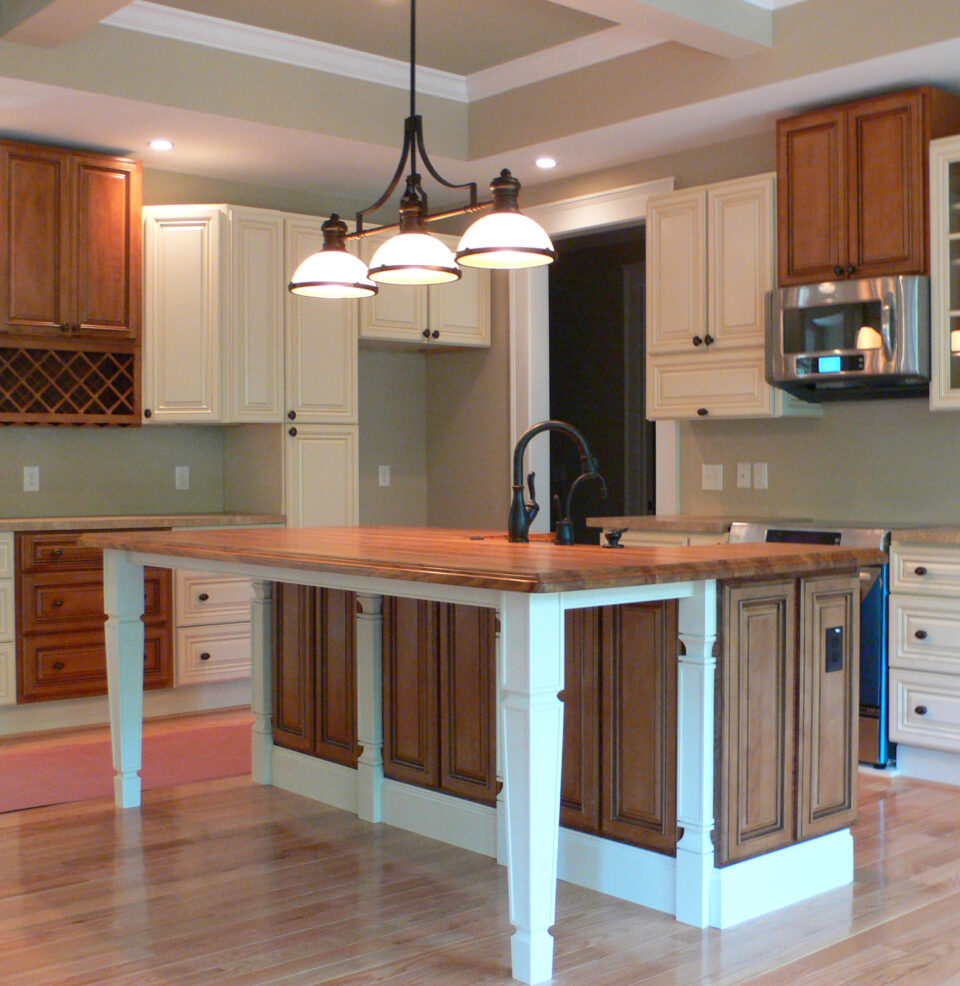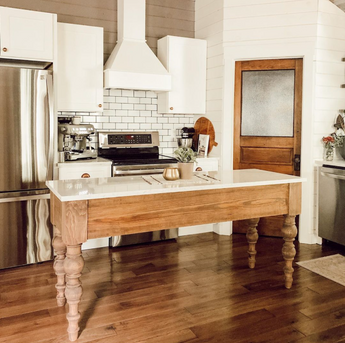Kitchen Island Legs: Add Performance and Design to Your Space
Kitchen Island Legs: Add Performance and Design to Your Space
Blog Article
Essential Tips for Selecting the Perfect Table for Your Cooking Area
Picking the ideal eating table for your kitchen area is even more than just an issue of preference; it requires a detailed understanding of your area and demands. The shape of the table plays an essential role; while rectangular tables match larger areas, rounded ones foster intimacy, and extendable choices supply flexibility. The table must harmonize with your kitchen area's appearances and accommodate your household pleasantly.
Step Your Area
Picking the optimal eating table starts with a precise evaluation of your readily available space. This foundational action makes certain that the table not only fits conveniently within the space yet additionally complements the overall design and performance of your eating location. Begin by gauging the dimensions of the room, considering doorways, windows, and any type of existing furnishings. This will certainly aid you determine the maximum allowable size for your table.
Consider the circulation of activity around the table. It is vital to leave adequate room for chairs to be taken out and for individuals to relocate around the table without obstruction. A general rule of thumb is to allow a minimum of 36 inches of clearance from the side of the table to the local wall surface or item of furniture. This guarantees ease of access and convenience throughout meals.
Additionally, consider the variety of people you typically delight and whether you need added space for visitors. Choosing for an extendable table can give versatility, permitting you to fit differing numbers of restaurants. By accurately gauging your space, you lay the foundation for selecting an eating table that enhances both the looks and functionality of your eating location.
Select the Right Forming

On the other hand, round tables are excellent for smaller cooking areas or intimate gatherings, as they advertise discussion by enabling every person to face each other. They additionally provide a sense of comfort and can fit well in tighter spaces because of their absence of sharp corners. Oval tables use the very best of both worlds, integrating the size of rectangular tables with the affection of rounded ones, making them versatile for various settings.
Square tables are an additional alternative, specifically matched for square-shaped areas. They develop a modern-day and balanced appearance, cultivating an equivalent eating experience for all seated.
Product Factors To Consider
When selecting a dining table, material considerations are critical in identifying the table's toughness, maintenance needs, and total visual. Wood is a traditional selection, supplying timeless allure and effectiveness. Hardwoods like walnut, oak, and mahogany are especially long lasting, though they can be pricey. kitchen island legs. Softwoods, such as want, are more inexpensive yet might be susceptible to scratches and damages.
Glass-topped tables supply a modern, streamlined look and can make an area appear bigger because of their openness. They call for frequent cleansing to prevent finger prints and spots. Additionally, toughened up glass is recommended for its additional strength and security.

Last but not least, composite products like MDF (Medium-Density Fiberboard) or plywood are economical options. These materials can resemble the look of solid timber however may not supply the exact same longevity. They are generally less complicated to clean but can be prone to water damage otherwise appropriately sealed.
Inevitably, the option of product ought to align with your cooking area's style, your way of living needs, and your spending plan constraints. (kitchen island legs)
Seats Capacity and Comfort
Exactly how do you determine the ideal seats capacity and comfort for your dining table? This vital action involves examining both the physical area readily available in your kitchen and your house's useful useful link requirements. Begin by gauging your kitchen area to make sure the table fits comfortably, enabling a minimum of 36 inches of clearance around it for simple activity. Consider the number of people who usually eat together, as this will affect the table dimension. For a family of 4, a rectangle-shaped table of 48 inches long or a round table with a 48-inch diameter is normally enough.
The height of the table ought to preferably be around 30 inches, supplying a well balanced ergonomic position for seated diners. Chairs must have a seat height of 18 to 20 inches to guarantee a comfortable dining posture.
Style and Aesthetic Appeal
Choosing an eating table that fits your design and appearance entails stabilizing personal taste with the existing design of your dining room. The eating table is often the focal point of the cooking area, and its style must match the total style of the space. Whether your kitchen flaunts a contemporary, minimalist look or a rustic, farmhouse beauty, the table you select ought to harmonize with these components to produce a cohesive and welcoming ambience.
Think about materials carefully; wood provides an ageless appeal and can vary from rich mahogany for a traditional appearance to lighter oak for a modern feel. Metal and glass tables, on the various other hand, can present a smooth, commercial side to best site your kitchen area. Do not neglect the table's shape-- rectangular tables are functional and classic, while round and oblong options can cultivate an extra intimate eating experience.
In addition, pay very close attention to coatings and information. A distressed surface may include personality and heat, whereas a shiny surface can add to a tidy, contemporary aesthetic. Inevitably, your table should not just fit seamlessly right into your kitchen area's style yet additionally mirror your individual style, elevating the space both functionally and aesthetically.
Final Thought
To conclude, choosing the excellent eating table for a cooking area necessitates careful analysis of room, shape, product, seating capability, and aesthetic harmony. Making sure a minimal clearance of 36 inches helps with comfortable motion, while the selection of form boosts spatial characteristics. Product option impacts resilience and layout, making it crucial to line up with the kitchen's overall aesthetic. Eventually, an appropriate dining table fosters a welcoming environment and fits the household comfortably, thus boosting the dining experience.

When choosing an eating table, product factors to consider are critical in determining the table's durability, upkeep requirements, and total visual. For a family members of 4, a rectangular table of 48 inches long or a round table with a 48-inch diameter is generally sufficient.
Do not overlook the table's form-- click to read rectangle-shaped tables are flexible and timeless, while round and oval alternatives can promote an extra intimate dining experience. kitchen island legs.
Report this page